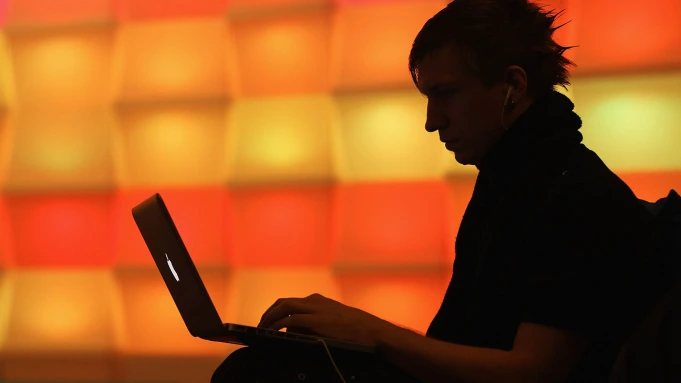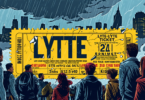By Elizabeth Moody
When it comes to sound recordings on audio-only, on-demand streaming services like Spotify and Apple Music, artists can take down content, either directly or through their labels.
Streaming services acquire the distribution rights to sound recordings from an artist’s record labels. The distribution deals generally cover all of a label’s controlled sound recordings, but they may contain some exceptions.
In most cases, an artist’s record label controls the distribution rights in the artist’s music, so the label has the ultimate decision-making control. Some artists have negotiated take-down rights with their record labels.
As a practical matter, in most cases, the record label will generally defer to artist interests, so if an artist wants to pull down content, the label will usually comply. When record labels negotiate distribution deals with streaming services, they will generally contain provisions that allow labels to take down content for artist-relations reasons.
In some cases, artists control their rights (like Taylor Swift for her new record deal and rerecords of her songs). In those cases, the artists have control and can take down or keep up the music on a service as they choose.
Therefore, it’s possible for most artists to request that their label take music down from a streaming service, but that decision is ultimately the record label’s.
For audio-only, non-interactive radio streaming services like Pandora and iHeart, artists can’t take down content in the U.S. but they have the right to do so in international markets.
Performing artists have fewer takedown rights for radio streaming services, at least in the United States. In the U.S., there is a statutory right for use of sound recordings in radio services.
As long as the service complies with the defined rules to be a radio service, and pays the per-play rate defined every few years by the Copyright Royalty Board, artists cannot object to use of their music. (Songwriters may still have limited rights to remove their music from radio; see below).
This law is specific to the U.S. Outside of the U.S., webcasting services must obtain blanket licenses from collection societies and/or record labels, and artists may have some withdrawal rights.
It may be easier for artists to remove content from video streaming services — with the help of their labels.
Artists may have more rights to take down music from video streaming services. The takedown would be accomplished through their record label. Video rights require an additional license — a synchronization license.
Traditionally, synchronization licenses were obtained on a track-by-track basis. Social media services like TikTok and fitness companies like Peloton, however, have been obtaining blanket sync licenses from record labels for the distribution of sound recordings in user-created social media posts and in fitness classes.
If the label knows that an artist does not want to be included, that artist would likely be placed on a restricted list in the license. Even if the artist is not specifically restricted, the label would have the right to withdraw content for artist-relations reasons, just as described above for the audio services. Therefore, artists do have a fair amount of control over when their music can be used in video services.
It is worth noting that platforms permitting user-uploaded content, like YouTube, have some additional protections for content under the Digital Millennium Copyright Act safe harbor provisions — but, if the platform wants to monetize the music, it will have to obtain a license from the record label and artist.
Meanwhile, songwriters have very limited rights to take down their works from audio streaming services.
Audio streaming services like Spotify need to clear two sets of rights in a songwriter’s composition in order to play their music. They need to clear the performance right through an organization like ASCAP, BMI, SESAC or GMR, and they need to ensure they have cleared the reproduction, or mechanical, right. Non-interactive, radio-style services like Pandora need only clear the public performance right.
Traditionally, there has been a statutory right for reproduction rights, allowing performers to record covers of songs as long as the songwriters were compensated. The record label distributors used to pay the fees to the songwriters, but, with the advent of streaming, the obligation to pay has shifted to the streaming services.
In the U.S., streaming rates are set by law and administered by the Mechanical Licensing Committee. As long as the service registers and reports to the MLC, the songwriter cannot object to use of their songs via audio streaming. Outside of the U.S., the licenses are administered via collection societies and music publishers.
In the U.S., performance rights are bound by a consent decree that requires any company that requests a license to be treated the same as similar services, but the rates are still subject to negotiation. SESAC and GMR are not required to license.
Therefore, an artist under SESAC and GMR may withdraw rights from a digital service by asking their PRO to withdraw rights. In order to take down performance rights from a streaming service that is licensed via ASCAP and BMI, the songwriter would need to withdraw their rights from their PRO.
Prince did this in 2015 when he withdrew all rights from ASCAP and his music was no longer licensed anywhere — even on terrestrial radio. That being said, ASCAP and BMI do reserve the right to take down content from streaming services and would likely do so if they deemed it important for artist-relations reasons.
Source: Hollywood Reporter







